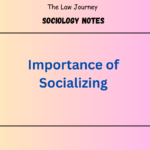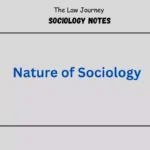Contributory Negligence, In some cases, a person who has been injured would be unable to seek compensation from another since his own carelessness led to his harm; everyone is obliged to take appropriate care of himself. “Negligence is conduct that fails to correspond to the standards necessary by law for safeguarding others (actionable negligence) or oneself (contributory negligence) from undue risk of damage,” says Dr. John G. Fleming.
Thus, contributory negligence occurs when the plaintiff, via his own lack of care, adds to the damage caused by the defendant’s carelessness or improper behaviour. For example, if a pedestrian attempts to cross the street unexpectedly and is struck by a moving car, he is guilty of contributory negligence. In this situation, the defendant may be able to totally avoid blame for the accident due to the plaintiff’s carelessness, which led to his damage.
Butterfieid V. Forrestor : D erroneously hindered the highway by erecting a pole across it. P, who was riding aggressively, noticed the pole from about 100 feet away, but came up against it and was flung over by it, injuring himself. D was found not to be responsible. The reason: If P had used reasonable caution, he could have avoided the collision; nonetheless, this judgement was changed subsequently in Davies v. Mann.
The Last Opportunity Rule
Contributory negligence is a full defence in common law, and the negligent plaintiff could not seek recompense from the defendant (See Butterfield v Forrester). That resulted in significant difficulty for the plaintiff since, due to minor carelessness on his side, he may lose his action against the defendant who was more to fault.
The courts changed the norm and established the so-called ‘last opportunity’ or ‘final chance’ rule. “When an accident occurs due to the joint carelessness of two individuals, he alone is accountable to the other who had the last opportunity to avoid the accident by reasonable care,” states the last opportunity rule.
Davies V. Mann : P had tied his donkey’s forefeet and set him free on the roadway. D, who was moving at a good clip in his horse-drawn cart, ran over and killed the donkey. D was sued by P. It was determined that D had the final chance to prevent the collision. As a result, D was responsible.
Rules to Determine Contributory Negligence
Whether there is contributory negligence or not has to be determined by the following rules:
(1) What the plaintiff’s negligence means
The plaintiff’s carelessness in connection to the defence of contributory negligence does not have the same significance as it does as a tort of negligence. In this case, the plaintiff’s carelessness does not imply a violation of duty to the other person, but rather a failure to exercise reasonable care for his own safety.
In Bhagwat Swarup v Himalaya Gas Co. (AIR 1985 H.P. 41), the defendant firm sent a deliveryman to the plaintiff’s home to repair a gas cylinder. The cylinder cap was faulty. The plaintiff provided the deliveryman with an axe, which he used to open the cylinder and hammer the cap.The gas seeped from there, causing a fire that killed the plaintiff’s daughter. It was determined that the deliveryman was solely negligent; the simple fact that the plaintiff provided an axe/hammer to the deliveryman upon request did not establish contributory culpability on the plaintiff’s side because he was a layman but the deliveryman was a skilled individual.
(2) Plaintiff’s negligence must be the operative cause of accident
It is insufficient to demonstrate that the plaintiff did not take enough precautions for his own safety. It must also be demonstrated that his carelessness contributed to the consequent damage. If the defendant’s negligence would have caused the same damage even if the plaintiff had been careful, and the plaintiff’s negligence is not the operative cause of the accident, the contributory negligence defence cannot be raised, i.e. the plaintiff is negligent in driving the motorcycle on the road without proper brakes, and the defendant negligently shoots and injures the plaintiff [Jones v Livox Quarries Ltd. (1952) 2 QB 608].
(3) Test of prudent man
To be found liable for contributory negligence, the plaintiff should not have behaved prudently. There is no contributory negligence if he took as much caution as a wise man would in a similar scenario. Thus, just resting one’s elbow on a window sill of a moving bus on a highway does not constitute contributory carelessness (Sushma Mitra v M.P.S.R.T.Corpn. AIR 1974 M.P.68).
In the instance, the Court stated: “It is evident that the plaintiff cannot be held liable for contributory negligence.”It is true that in packed streets of large cities, adult passengers are required to keep their limbs within carriage… but in this instance, the plaintiff was hurt when the bus was travelling on a highway outside the town’s bounds. Even a guy of average wisdom would rest his elbow on the window sill in such a scenario, and he cannot be expected to perceive any danger in doing so.
(4) Alternate Danger doctrine
The dilemma principle is another name for this. A circumstance like this emerges when the defendant’s wrongdoing puts the plaintiff, P, in imminent bodily risk. P sustains harm in order to avoid the danger. D is liable in such circumstances.
Jones v. Boyce: D, a coach-driver, was speeding and driving recklessly with P, which worried P. The coach’s coupling failed as it down the slope; it collided with a pole and was ready to be turned down. P leaped out to save himself and got hurt. He sued D and held him accountable. If P had not leapt out, he would not have been hurt because the coach came to a stop without incident later. Even then D was held liable as he had created a dilemma to P.
(5) Presumption that others are careful/Statutory negligence
In many circumstances, such a presumption may be created, and the plaintiff is not culpable of contributory negligence if he or she did not protect against the defendant’s negligent behaviour. There are several situations in which the plaintiff might assume that the defendant will be cautious.
In Gee v Metropolitan Rly. Co. (1873) 8 QB 161, the plaintiff (a passenger) casually leaned on a carriage door not long after the train had left the station. The door was not properly fastened, and as a result, the passenger fell from the train.The plaintiff was entitled to recover even though he did not check up that the door had been properly fastened because he had a right to presume that the railway servants were not negligent in leaving the door unfastened.
(6) Contributory negligence of children
What constitutes contributory negligence in the case of an adult may not be the same in the case of a kid since a youngster may be incapable of appreciating and comprehending certain hazards.
In Motias Costa v Roque Augustinho Jacinto (AIR 1976 Goa 1), a kid of around 6 years old was struck by a motor bike while attempting to cross a road to go to school on the opposite side of the road. It was determined that the motorcyclist might have anticipated that school-age children would cross the road at that moment, and so he was responsible notwithstanding the fact that the youngster quickly came in front of the car.
(7) Doctrine of identification (Imputed contributory negligence)
The defence of contributory negligence can be invoked not only when the plaintiff is negligent, but also when his servant/agent is negligent. Thus, if I hire an independent contractor and he is careless, I will be connected with the independent contractor and will face the contributory negligence defence.
Bernina Mills v Armstrong (1881)13 A.C. l. overturned the doctrine specifically. Because an employer has no control over the independent contractor, the independent contractor’s contributory carelessness is not judged to be that of the person utilising his services. This is especially true when a passenger is travelling in a vehicle provided by an independent contractor.
The Rajasthan High Court declared in Darshani Devi v Sheo Ram 1987 ACJ 931 that under Indian law, no passenger may be held accountable for contributory negligence for the omission of the automobile driver, truck driver, bus driver, train driver, or pilot.
In Oliver v Birmingham & Midland Omnibus Co. (1933) 1 KB 35, a four-year-old toddler and his grandpa were crossing the road. When the defendant’s omnibus arrived, the grandpa panicked and abandoned the kid in the middle of the road, jumping off the road himself. The child got injured; but he was not identified with his grandfather and in spite of the contributory negligence on the latter’s part the child was entitled to recover compensation from the defendant.
Related Post
Meaning of Contributory Negligence ?
In some cases, a person who has been injured would be unable to seek compensation from another since his own carelessness led to his harm; everyone is obliged to take appropriate care of himself.
What do you mean by The Last Opportunity Rule ?
“When an accident occurs due to the joint carelessness of two individuals, he alone is accountable to the other who had the last opportunity to avoid the accident by reasonable care,” states the last opportunity rule.
What are ther rules that Determine Contributory Negligence ?
(1) What the plaintiff’s negligence means,
(2) Plaintiff’s negligence must be the operative cause of accident,
(3) Test of prudent man,…..
References
- A.K Jain law of torts
- P.S.A. Pillai’s – Law Of Tort
- Law of Torts by J.N. Pandey
- Law of Torts by Ratanlal and Dhirajlal
- Universals Law of Torts
- Law of Torts by RK Bangia (22nd Edition)

















